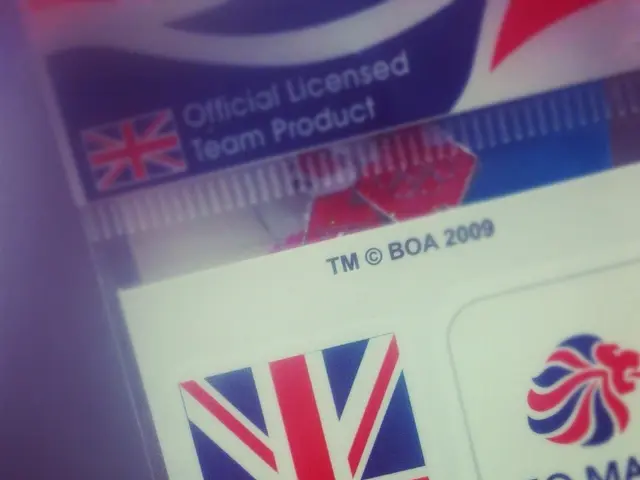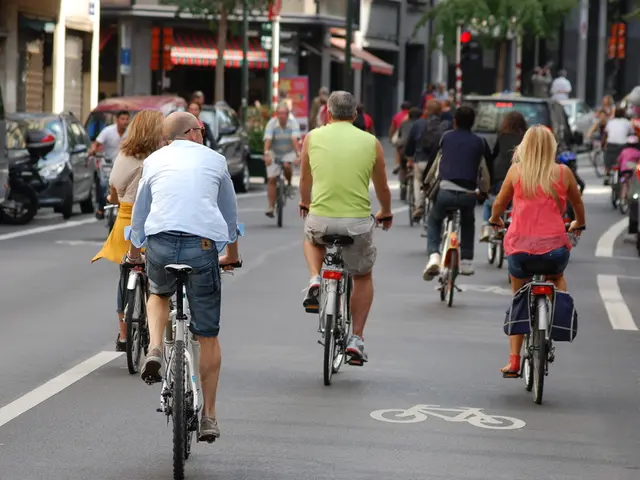Proposals have been put forth by the Commission regarding the matter.
The ongoing wildfires in France have caused significant disruption, with hundreds of hectares torched and road traffic disrupted during a busy vacation departure weekend. Amidst these challenges, the country's Canadair aerial firefighting fleet, primarily composed of the CL-415 waterbombers, remains a crucial part of the wildfire suppression efforts.
However, the age of these aircraft is becoming a concern. With an average age of 30 years, the Canadairs are struggling to maintain their reliability due to maintenance issues and the effects of aging, particularly when exposed to seawater. This has led to one Canadair being unavailable this summer following an accident in May.
In a bid to address these issues, the General Directorate for Civil Security has prioritized the maintenance of existing capacities before any new acquisition. Yet, the directorate has faced criticism for not positioning itself on a call for proposals allowing for the acquisition of two heavy helicopters.
Looking beyond France, there is a clear momentum towards modernization in the global aerial firefighting industry. The next-generation De Havilland Canadair 515 (DHC 515) is set to succeed the classic CL-215 and CL-415 models. This new aircraft boasts modern avionics, enhanced performance, and improved efficiency, designed to meet the challenges of longer and more intense wildfire seasons driven by climate change.
Canadian provinces are already investing in the DHC 515, with Manitoba announcing its intent to purchase three DHC 515 aircraft to renew its firefighting fleet. This strong ongoing investment and confidence in the DHC 515 platform suggest that European operators, including French firefighting services, will likely follow suit in time.
Meanwhile, companies like Avincis, Europe’s largest emergency aerial services provider, are actively operating CL-415s from their Italian fleet and can mobilize them quickly across Europe and beyond. This indicates the current CL-415 fleet remains operational and crucial for wildfire response.
As France navigates its Canadair fleet renewal plans, the government has announced a 7 million euro participation in the project of the French company Hynaero's amphibious water bomber, baptized "Fregate-F100". This move signals a possible shift towards modernizing the fleet.
In summary, while France's specific renewal plans are not yet detailed, the development and adoption of the DHC 515 by Canadian provinces and its positioning as the future of wildfire suppression suggest that European operators, including French firefighting services, will likely follow suit in time, either by upgrading existing Canadair fleets or acquiring the DHC 515 model to maintain capability and improve efficiency.
[1] De Havilland Canada. (2022). DHC-515 aircraft. Retrieved from https://www.dhcanada.com/products/aircraft/dh-515 [4] Avincis. (2022). Aerial firefighting. Retrieved from https://www.avincis.com/services/aircraft/aerial-firefighting
- The weather conditions during France's busy vacation period were disrupted due to widespread wildfires, causing significant damage and traffic disruptions.
- France's response to these wildfires primarily involves the use of Canadair's CL-415 waterbombers, but their reliability is a growing concern due to their age and maintenance issues.
- The General Directorate for Civil Security is prioritizing the maintenance of current capacities, but has faced criticism for not considering the acquisition of new heavy helicopters in a call for proposals.
- In the global aerial firefighting industry, there's a push towards modernization, with the De Havilland Canadair 515 (DHC 515) poised to replace older models like the CL-215 and CL-415.
- Canadian provinces are investing in the DHC 515, with Manitoba planning to purchase three aircraft to modernize its firefighting fleet.
- Companies such as Avincis, Europe’s largest emergency aerial services provider, are continuing to operate CL-415s, showing their importance in wildfire response.
- France has announced a 7 million euro investment in Hynaero's amphibious water bomber, the Fregate-F100, potentially signaling a move towards modernization for the French firefighting fleet.
- The trend suggests that European operators, including the French, are likely to follow the lead of Canadian provinces and invest in modern aircraft like the DHC 515 to maintain capability and improve efficiency in the face of longer and more intense wildfire seasons caused by climate change.




